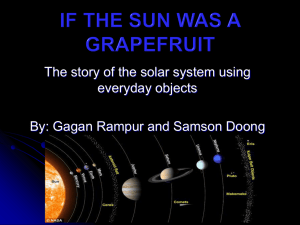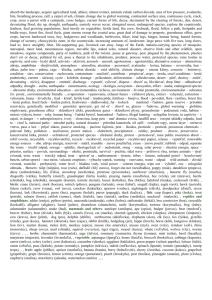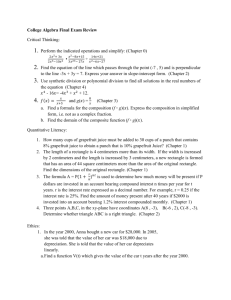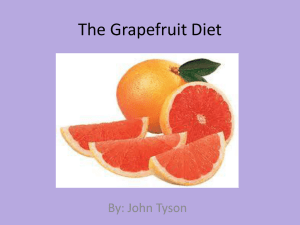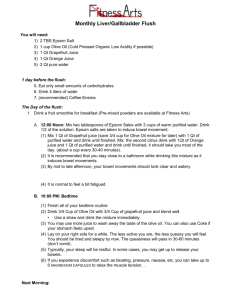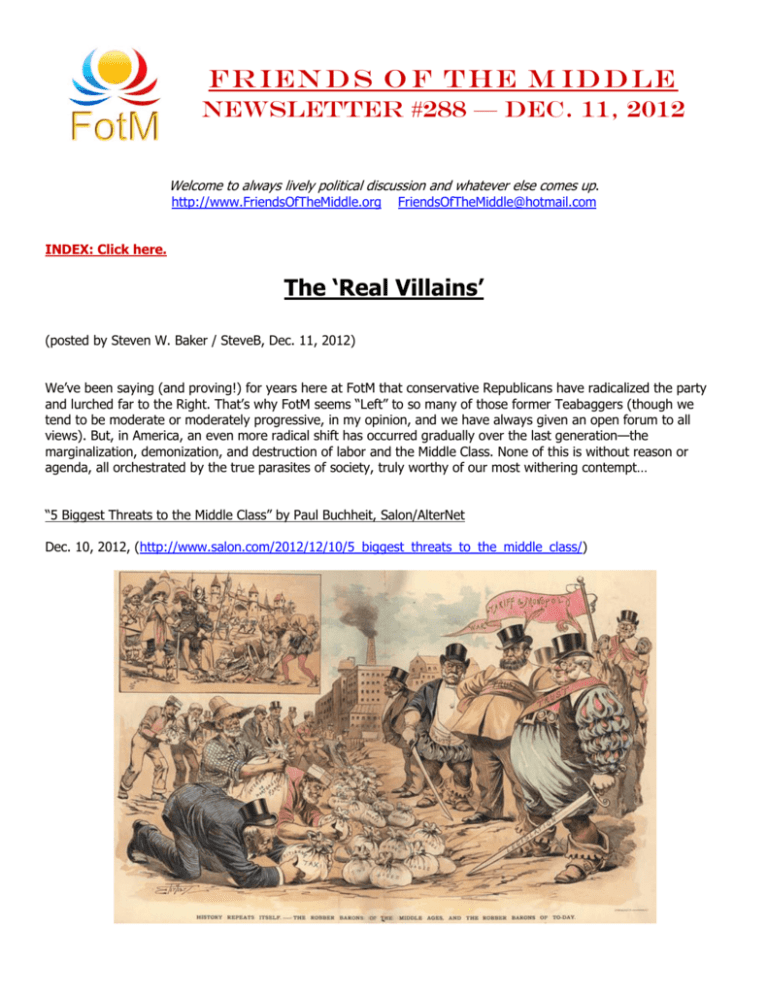
FR IEN D S O F T H E M ID D LE
Newsletter #288 — DEC. 11, 2012
Welcome to always lively political discussion and whatever else comes up.
http://www.FriendsOfTheMiddle.org
FriendsOfTheMiddle@hotmail.com
INDEX: Click here.
The ‘Real Villains’
(posted by Steven W. Baker / SteveB, Dec. 11, 2012)
We’ve been saying (and proving!) for years here at FotM that conservative Republicans have radicalized the party
and lurched far to the Right. That’s why FotM seems “Left” to so many of those former Teabaggers (though we
tend to be moderate or moderately progressive, in my opinion, and we have always given an open forum to all
views). But, in America, an even more radical shift has occurred gradually over the last generation—the
marginalization, demonization, and destruction of labor and the Middle Class. None of this is without reason or
agenda, all orchestrated by the true parasites of society, truly worthy of our most withering contempt…
“5 Biggest Threats to the Middle Class” by Paul Buchheit, Salon/AlterNet
Dec. 10, 2012, (http://www.salon.com/2012/12/10/5_biggest_threats_to_the_middle_class/)
(It's time to stop blaming the federal government and start looking at the parasitism of corporate America.)
One of the pleasures of a weekend away from the city is visiting with people who express points of view that are
different from my own. A lot of them hate government. Their comments are sprinkled with colorful references to
taxes, waste, and socialism.
Countering with facts and statistics doesn’t seem to work. Instead, listening to their rants can be educational for a
progressive, because the anti-government sentiment highlights the masterful job done by conservatives and the
wealthy over the years, as they have basically convinced much of America to argue against themselves on matters
of politics and the economy.
It would make more sense to take on the real villains.
1. Medical Providers
They’re taking a lot more of our money than Medicare does. According to the Council for Affordable Health
Insurance, medical administrative costs as a percentage of claims are about three times higher for private
insurance than for Medicare. The U.S. Institute of Medicine reports that the for-profit system wastes $750
billion a year on waste, fraud, and inefficiency. As a percent of GDP, we spend $1.2 trillion more than the
OECD average.
That’s an amount equal to the entire deficit wasted on private medical care companies. One out of every six
dollars we earn goes to doctors, hospitals, drug companies, and insurance companies. All good reasons to
redirect our hatred.
2. Retirement Brokers
Various reports have concluded that administrative costs for 401(k) plans are much higher than those for
Social Security — up to twenty times more.
It would be difficult to find, or even imagine, any short-term-profit-based private insurer that is fully funded
for the next 25 years. Social Security is. It works for all retirees while private plans work for a limited
number of investors.
3. Banks
Government is often blamed for local budget shortfalls, but cities and towns around the country have been
repeatedly victimized by a “bid-rigging” process that diverts billions of dollars — a few thousand at a time —
from numerous unsuspecting communities to the accounts of a few big banks.
Individual homeowners, especially minorities, have also been victimized by the banks. Because of the
housing crash and the corresponding decrease in home values, black households lost over half of their
median wealth, and Hispanic households almost two-thirds.
There are scandals and scams galore: the privately run Mortgage Electronic Registration System (MERS)
headed up the illegal foreclosure business; the banking association LIBOR was guilty of interest rate
manipulation; and plenty of financial institutions have engaged in the subtle art of imposing hidden fees.
Credit cards are loaded with “gray charges” like surprise subscriptions and auto-renewals that cost the
average consumer $356 a year.
Yet we’re forced to keep paying. Shockingly, it has been estimated that 40% of every dollar we spend on
goods and services goes to banks as interest.
Public banks, on the other hand, focus on the needs of communities and small businesses rather than on
investors. The most well-known example is the Bank of North Dakota (BND), which has successfully worked
with local banks throughout the state, promoting business growth through loans that a larger bank might be
reluctant to make, while managing to turn a profit every year for the past 40 years.
4. Higher Education Operators
Outside of the banking industry, there may not be a more egregious example of public abuse than the
expropriation of higher education by profit-seekers who have subjected underemployed young people to
years of student loan obligations. The collection of outstanding student debt is managed in good part by big
banks like JP Morgan and Citigroup.
In most countries tuition remains free or nominal, but in America, as noted by Noam Chomsky, the belief
that education strengthens a country is giving way to a philosophy of paying for your own educational
benefits. Meanwhile, the “corporatization of universities” has led to a dramatic increase in administrators
while relatively expensive programs like nursing, engineering and computer science are being cut.
But the easy loans keep accruing interest long after college ends. With a hint of foreboding, the Consumer
Financial Protection Bureau and Department of Education reported that the student loan debacle has been
fueled by the same forces that led to the subprime mortgage collapse.
5. Big Box and Fast Food Companies
Smaller government is promoted by the very companies that make record profits while forcing their
employees to accept public assistance.
While McDonald’s enjoyed profits of 130 percent over the past four years, and Yum! Brands (Pizza Hut, Taco
Bell and KFC) made 45 percent, and while the Walton family made $20 billion in one year, the median
hourly wage for food service workers and Walmart employees is about $9 an hour. Many workers are stuck
at the $7.25 minimum wage, which according to the National Employment Law Project is worth 30 percent
less than in 1968.
Food service and big box store employees, among the fastest-growing job segments in the nation, are
making barely enough to stay out of poverty. And it’s not just the employees who are subsidizing their
bosses. We all are. Low-wage employees are more dependent on the food stamps and Medicaid that are
paid for by our tax dollars.
What is the incentive for private companies to deal with tragedies like Hurricane Sandy? The Pacific Standard aptly
stated that “the free market doesn’t want to be in the flood business.”
What is the incentive for private companies to keep the poisons out of our drinking water? Without sufficient
government regulations the Clean Water Act was violated a half-million times in one year.
What is the incentive for private companies to plow the county roads? Or to reduce the number of prisoners in
profit-seeking prisons? Or to allow you to send a birthday card for just 45 cents? Or to simply treat its customers
with respect rather than as a source of profit?
The “invisible hand” of the free market is unable, or unwilling, to satisfy the needs of society in all these areas. For
that it is worthy of our contempt.
FotM NEWSLETTER #288 (Dec. 11, 2012)—HYPERTEXT INDEX
DATE-ID
TIME
20121211-00
FROM
SteveB
20121210-01
10:08
Pam
20121210-02
20121210-03
20121210-04
20121210-05
20121210-06
20121210-07
20121210-08
20121210-09
12:28
17:23
17:30
20:46
22:05
22:17
23:58
23:59
Pam
SteveB
SteveB
Marci
Tom
SteveB
Tom
SteveB
20121210-01
10:08
Pam
SUBJECT/TITLE
The ‘Real Villains’ by Steven W. Baker / SteveB (“5 Biggest Threats to
the Middle Class”)
Re: “What James Madison Would Tell Grover Norquist” (reply to MarthaH,
FotM Newsletter #287)
Re: “The Forgotten Millions” (reply to SteveB, FotM Newsletter #287)
“Grapefruit Is Disgusting”
“Why the War on Drugs Is a War on Human Nature”
Graphic: “Still Think Atheists Have No Morals?”
Cartoon: KFC Serving Big Bird
“Robots and Robber Barons”
Photo: Go Out & Enjoy Nature #2
Photo: Ice Scupture
Re: “What James Madison Would Tell Grover Norquist” (reply to MarthaH,
FotM Newsletter #287)
This is great. I didn't realize MoveOn.org had pledges too. I hate pledges. They smack of the House on
UnAmerican Activities back in the day.
I have just read an incredible book: The Yellow Birds by Kevin Powers. It's a novel about his experience in the Iraq
war, and it is astonishingly good. This is Powers' first novel, and you can tell he came to fiction from writing poetry.
It's graphic and upsetting, but not in a way that overshadows the meaning of what's happening. He gives enough
detail to show how bad things were, but the descriptions of violence are not gratuitous. This isn't about all the
terrible things that occurred but rather how one young soldier coped with his experience. I highly recommend it.
20121210-02
12:28
Pam
Re: “The Forgotten Millions” (reply to SteveB, FotM Newsletter #287)
I like the Krugman piece and have sent it to some of my other friends and family. :-)
20121210-03
17:23
SteveB
“Grapefruit Is Disgusting”
“Grapefruit Is Disgusting” by Katy Waldman, Slate
Dec. 10, 2012,
(http://www.slate.com/articles/life/holidays/2012/12/grapefruit_is_disgusting_no_one_should_eat_it_let_alone_give
_it_as_a_holiday.html)
(Why you shouldn’t give it to your loved ones as a holiday gift. Or to anyone, ever.)
Happy holidays, and brace yourself for the season’s worst tradition! I speak not of the crass commercialization of
Christmas, nor of the unconscionable deceit of hyping children up for Santa’s visit. No, I speak of the annual
bombardment of grapefruit.
We’ll see Harry and David catalogs in the mail, Cushman’s ads in the newspaper, and other marketing ploys for the
putrid stocking stuffers. That one clueless aunt will mail you a crate. The ritual of shipping your loved ones
grapefruit goes back to the Great Depression, when people wanted to send each other “nourishing” gifts they could
actually “use.” Unlike apples and pears, domestic citrus fruits reached peak ripeness during the colder months.
Grapefruit proved durable and thus cheap to transport—packed into crates, they could be loaded onto railroad cars
and delivered around the country. Almost a century later, nostalgia (or would that be obstinacy?) keeps the
tradition in play.
It needs to stop. This killjoy has already invaded our breakfast routines. Its baleful pink, white, or red flesh shines
from thousands of tables. Its pulp gets stuck in our teeth. Its juice stains our clothes. And now, we are asked to
inflict the scourge on our relatives, shipping it off in packages of 12 or more in order to demonstrate our love?
No. Grapefruit is unwieldy, disgusting, and in some cases dangerous to eat. It is indisputably the worst fruit anyone
has ever put on a plate.
A pause, now, for its partisans to bellow, “But it’s a superfood!” Grapefruit enjoys an exalted reputation, thanks in
part to countless magazine stories and nutrition listicles singing its praises. It figures in fad diets, including its
eponymous diet, dreamed up by Hollywood sadists. Even its scientific name, Citrus x paradisi—so called because, in
1750, naturalist Griffith Hughes dubbed grapefruit the “forbidden fruit” of the Barbados—implies that it belongs
somewhere in the Garden of Eden. It does not. It belongs in the trashcan. Consider the evidence:
1. It’s impossible to eat.
A halved grapefruit demands that the opposition suit up for battle. Its edible parts radiate out from its
center in segments; separating those wedges from the membrane requires you to saw at them like a
maniac with the edge of your spoon. (Some people prepare the fruit with a knife first, which makes things
easier but is tedious.) Either way, you end up squirting juice all over yourself. If you’re wearing a light color,
you’ll have to change your clothes after the meal. If you’re outdoors, you’ll immediately become a trough for
every insect within a three-mile radius.
Incidentally, there are legends of something called a “grapefruit spoon,” with a serrated edge designed to
help carve out the fruit’s viscera. I have never seen one. Perhaps they only reveal themselves to the worthy,
like the Holy Grail. (Or perhaps I simply don’t spend enough time in rarefied circles.)
Magic utensil or no, things don’t get much easier once you’ve managed to part pith from flesh. You must dig
underneath the pulpy segment, trying to balance it on your spoon so that it doesn’t slip off. When it does—
and it will—you can choose between retrieving it with your fingers while your classier friends pretend not to
notice or just commence sawing a new section. The whole ordeal is not unlike shoveling fish, if you can
imagine shoveling fish as an ostensibly healthy, socially approved activity.
2. It tastes disgusting.
A difficult eating process doesn’t have to be a deal breaker; the choreography of consumption can add to a
meal’s charm (think lobster). But grapefruit has a more damning problem: It tastes awful. I’m not alone in
this judgment.
The polling site Amplicate reports that 26 percent of its 8,066 respondents hate grapefruit. That’s more
people than hate Chris Brown, bagpipe music, or Brussels sprouts. And the Internet abounds with discussion
threads titled things like “Why are grapefruits so nasty? (One answer: “I don’t know but they are. They
make me feel like I have fur on my tongue.”)
Slate’s Hanna Rosin told me recently that her Israeli parents served grapefruit for breakfast every morning
because its bitter taste evoked the suffering of the Jews. American novelist and playwright Harry Crews also
flagged grapefruit as a harbinger of strife. In his memoir Childhood: The Biography of a Place, he writes,
“The tension and anger coming off” his parents “brought the unmistakable smell of grapefruit into the
house.” Lest we harbor any doubts about the citrus’ infernal powers, Crews reflects thusly on the experience
of trying grapefruit for the first time: “I only had to touch my lips to my piece to know something was
wrong, bad wrong.”
Anecdotal evidence suggests that some people, traumatized by the taste of grapefruit, go into denial about
its very existence. This is the most reasonable explanation I can think of for why rapper 50 Cent acted as if
he had never heard of it when a waiter brought him the grapefruit soda he ordered and he asked why it
wasn’t purple (per comedian Aziz Ansari’s telling).
In fact, grapefruits got their common name from the way they cluster on the tree like a bunch of grapes.
They did not, it is worth noting, get their name because they taste like grapes, which are delicious. In fact,
a grapefruit tastes more like a bad-tempered orange soaked in kerosene, like a pack of stale Warheads
rehydrated in vinegar, like a sock filled with battery acid. Grocers and grapefruit vendors describe
grapefruits as “tangy,” “sharp,” and—rather poetically—“full of sunshine,” but this is laughable. Have you
ever seen a grocer actually eat one?
3. It’s plotting to murder you.
The compounds in grapefruit inhibit an enzyme in the intestine from metabolizing certain substances. These
substances include drugs that regulate blood pressure (Nitrendipine), high cholesterol (Lipitor), heart
arrhythmia (Cordarone), and depression (Zoloft). If you eat grapefruit or drink grapefruit juice within three
days of taking such drugs, your body fails to process the medications as it should, and you can experience
side effects resulting from higher levels of the drug in your system. The bottom line? Grapefruit is trying to
kill us.
What, then, accounts for our national grapefruit worship? Why do we lie to ourselves about its suitability as a
holiday gift? Why do we continue to tolerate the sourness, the mess, the mechanical impossibility of consuming
grapefruit without a prissy specialized spoon that belongs, perhaps, in jokes about Mitt Romney’s table settings, but
not in real life?
Apparently it’s crammed with Vitamin C, fiber, calcium, and a possibly cancer-preventing antioxidant called
lycopene. Never mind that the list of fruits with more Vitamin C than grapefruit takes care of half the produce aisle:
papayas, strawberries, oranges, clementines, tangerines, kiwis, guavas, and cantaloupe, for starters. Or that you
can get way more calcium and fiber simply from eating a bowl of cereal with milk. Or that the tests demonstrating
the cancer-fighting properties of lycopene were inconclusive.
Experts once thought grapefruit contained a mysterious enzyme that dissolved fat, but that theory was debunked in
2011 by a study from—of all people—the Florida Citrus Department. “There is no evidence that grapefruit has fatburning enzymes, nor is it a magic bullet for weight loss,” Connie Diekman, the past president of the American
Dietetic Association, has said.
Meanwhile, diet gurus loved grapefruit because they believed it required more energy to digest than it actually
contained. In other words, eating grapefruit burned calories! It was exercise!
Unfortunately, the “negative calorie” label is problematic on its own—and even if it weren’t, it’s unclear that
grapefruit would fit the bill. While grapefruit does boast a low glycemic index, its effect on weight loss is fairly weak,
according to one 2004 study from the Scripps Clinic.
More importantly, many unpalatable or impracticable things can help people lose weight, including eating woodchips
or wrestling bears. That doesn’t mean we eat woodchips or wrestle bears, although I’d honestly consider doing both
before fake-smiling my way through another grapefruit half over Sunday brunch.
So please, if you were even remotely thinking about shipping a box of grapefruit to someone you love for the
holidays, kindly desist. Offloading a box of grapefruit on someone you hate, however—at least the revenge will be
sweet.
20121210-04
17:30
SteveB
“Why the War on Drugs Is a War on Human Nature”
“Why the War on Drugs Is a War on Human Nature” by Lewis Lapham, TomDispatch/AlterNet
Dec. 9, 2012, (http://www.alternet.org/drugs/why-war-drugs-war-human-nature)
(Drug prohibition is making America ever more security mad and locked down.)
(This essay will appear in "Intoxication," the Winter 2012 issue of Lapham's Quarterly.)
The question that tempts mankind to the use of substances controlled and uncontrolled is next of kin to Hamlet’s:
to be, or not to be, someone or somewhere else. Escape from a grievous circumstance or the shambles of an
unwanted self, the hope of finding at a higher altitude a new beginning or a better deal. Fly me to the moon, and
let me play among the stars; give me leave to drown my sorrow in a quart of gin; wine, dear boy, and truth.
That the consummations of the wish to shuffle off the mortal coil are as old as the world itself was the message
brought by Abraham Lincoln to an Illinois temperance society in 1842. “I have not inquired at what period of time
the use of intoxicating liquors commenced,” he said, “nor is it important to know.” It is sufficient to know that on
first opening our eyes “upon the stage of existence,” we found “intoxicating liquor recognized by everybody, used
by everybody, repudiated by nobody.”
The state of intoxication is a house with many mansions. Fourteen centuries before the birth of Christ, the Rigveda
finds Hindu priests chanting hymns to a “drop of soma,” the wise and wisdom-loving plant from which was drawn
juices distilled in sheep’s wool that “make us see far; make us richer, better.” Philosophers in ancient Greece
rejoiced in the literal meaning of the word symposium, a “drinking together.” The Roman Stoic Seneca recommends
the judicious embrace of Bacchus as a liberation of the mind “from its slavery to cares, emancipates it, invigorates
it, and emboldens it for all its undertakings.”
Omar Khayyam, twelfth-century Persian mathematician and astronomer, drinks wine “because it is my solace,”
allowing him to “divorce absolutely reason and religion.” Martin Luther, early father of the Protestant Reformation,
in 1530 exhorts the faithful to “drink, and right freely,” because it is the devil who tells them not to. “One must
always do what Satan forbids. What other cause do you think that I have for drinking so much strong drink, talking
so freely, and making merry so often, except that I wish to mock and harass the devil who is wont to mock and
harass me.”
Dr. Samuel Johnson, child of the Enlightenment, requires wine only when alone, “to get rid of myself -- to send
myself away.” The French poet Charles Baudelaire, prodigal son of the Industrial Revolution, is less careful with his
time. “One should always be drunk. That’s the great thing, the only question. Drunk with what? With wine, with
poetry, or with virtue, as you please.”
My grandfather, Roger Lapham (1883–1966), was similarly disposed, his house in San Francisco the stage of
existence upon which, at the age of seven in 1942, I first opened my eyes to the practice as old as the world itself.
At the Christmas family gathering that year, Grandfather deemed any and all children present who were old enough
to walk instead of toddle therefore old enough to sing a carol, recite a poem, and drink a cup of kindness made
with brandy, cinnamon, and apples. To raise the spirit, welcome the arrival of our newborn Lord and Savior. Joy to
the world, peace on earth, goodwill toward men.
“If You Meet, You Drink…”
Thus introduced to intoxicating liquors under auspices both secular and sacred, the offering of alms for oblivion I
took to be the custom of the country in which I had been born. In the 1940s as it was in the 1840s, as it had been
ever since the Mayflower arrived at Plymouth laden with emboldening casks of wine and beer. The spirit of liberty is
never far from the hope of metamorphosis or transformation, and the Americans from the beginning were drawn to
the possibilities in the having of one more for the road. They formed their character in the settling of a fearful
wilderness, and the history of the country could be written as a prolonged mocking and harassing of the devil by
the drinking, “and right freely,” from whatever wise and wisdom-loving grain or grape came conveniently to hand.
The oceangoing Pilgrims in colonial Massachusetts and Rhode Island delighted in both the taste and trade in rum.
The founders of the republic in Philadelphia in 1787 were in the habit of consuming prodigious quantities of liquor
as an expression of their faith in their fellow men -- pots of ale or cider at midday, two or more bottles of claret at
dinner followed by an amiable passing around the table of the Madeira.
Among the tobacco planters in Virginia, the moneychangers in New York, the stalwart yeomen in western
Pennsylvania busy at the task of making whiskey, the maintaining of a high blood-alcohol level was the mark of
civilized behavior. The lyrics of the “Star-Spangled Banner” were fitted to the melody of an eighteenth-century
British tavern song. The excise taxes collected from the sale of liquor paid for the War of 1812, and by 1830 the
tolling of the town bell (at 11 a.m., and again at 4 p.m.) announced the daily pauses for spirited refreshment.
Frederick Marryat, an English traveler to America in 1839, noted in his diary that the way the natives drank was
“quite a caution... If you meet, you drink; if you part, you drink; if you make acquaintance, you drink; if you close a
bargain, you drink; they quarrel in their drink, and they make it up with a drink. They drink, because it is hot; they
drink, because it is cold.”
During what were known as the Gay Nineties, at the zenith of the country’s Gilded Age, Manhattan between the
Battery and Forty-second Street glittered in the lights of 10,000 saloons issuing passports to the islands of the
blessed and the rivers of forgetfulness. No travel plan or destination that couldn’t be accommodated, prices
available on request. French champagne at Sherry’s Restaurant for the top-hatted Wall Street speculators
celebrating the discoveries of El Dorado; shots of five-cent whiskey (said to taste “like a combination of kerosene
oil, soft soap, alcohol, and the chemicals used in fire extinguishers”) for the unemployed foreign laborer sleeping in
the gutters south of Canal Street. Who could say who was hoping to trade places with whom, the uptown swell
intent upon becoming a noble savage, the downtown immigrant imagining himself dressed in fur and diamonds?
What else is America about if not the work of self-invention? Recognize the project as an always risky business, and
it is the willingness to chance what dreams may come (west of the Alleghenies or on the further shores of
consciousness) that gives to the American the distinguishing traits of character that the historian Daniel J. Boorstin,
librarian of Congress from 1975 to 1987, identified as those of the chronic revolutionary and the ever hopeful
pilgrim. Boorstin drew the conclusion from his study of the American colonial experience: “No prudent man dared
be too certain of exactly who he was or what he was about; everyone had to be prepared to become someone else.
To be ready for such perilous transmigrations was to become an American.”
“There Are More Kicks to Be Had in a Good Case of Paralytic Polio”
So too in the 1960s, the prudent becoming of an American involved perilous transmigrations, psychic, spiritual, and
political. By no means certain who I was at the age of 24, I was prepared to make adjustments, but my one
experiment with psychedelics in 1959 was a rub that promptly gave me pause.
Employed at the time as a reporter at the San Francisco Examiner, I was assigned to go with the poet Allen
Ginsberg to the Stanford Research Institute there to take a trip on LSD. Social scientists opening the doors of
perception at the behest of Aldous Huxley wished to compare the flight patterns of a Bohemian artist and a
bourgeois philistine, and they had asked the paper’s literary editor to furnish one of each. We were placed in
adjacent soundproofed rooms, both of us under the observation of men in white coats equipped with clipboards,
the idea being that we would relay messages from the higher consciousness to the air-traffic controllers on the
ground.
Liftoff was a blue pill taken on an empty stomach at 9 a.m., the trajectory a bell curve plotted over a distance of
seven hours. By way of traveling companions we had been encouraged to bring music, in those days on vinyl LPs,
of whatever kind moved us while on earth to register emotions approaching the sublime.
Together with Johann Sebastian Bach and the Modern Jazz Quartet, I attained what I’d been informed would be
cruising altitude at noon. I neglected to bring a willing suspension of disbelief, and because I stubbornly resisted
the sales pitch for the drug -- if you, O Wizard, can work wonders, prove to me the where and when and how and
why -- I encountered heavy turbulence. Images inchoate and nonsensical, my arms and legs seemingly elongated
and embalmed in grease, the sense of utter isolation while being gnawed by rats.
To the men in white I had nothing to report, not one word on either the going up and out or the coming back and
down. I never learned what Ginsberg had to say. Whatever it was, I wasn’t interested, and I left the building before
he had returned from what by then I knew to be a dead-end sleep.
My long-standing acquaintance with alcohol was for the most part cordial. Usually when I drank too much, I could
guess why I did so, the objective being to murder a state of consciousness that I didn’t have the courage to sustain
-- a fear of heights, which sometimes during the carnival of the 1960s accompanied my attempts to transform the
bourgeois journalist into an avant-garde novelist. The stepped-up ambition was a commonplace among the wouldbe William Faulkners of my generation; nearly always it resulted in commercial failure and literary embarrassment.
I didn’t grow a beard or move to Vermont, but every now and then I hit upon a run of words that I could mistake
for art, and I would find myself intoxicated by what Emily Dickinson knew to be “a liquor never brewed/from
Tankards scooped in Pearl.” The neuroscientists understand the encounter with the ineffable as an “endorphin
high,” the outrageously fortunate mixing of the chemicals in the brain when it is being put to imaginative and
creative use.
On being surprised by a joy so astonishingly sweet, I assumed that it must be forbidden, and if by the light of day
I’d come too close to leaning against the sun with seraphs swinging snowy hats, by nightfall I felt bound to check
into the nearest cage, drunkenness being the one most conveniently at hand. Around midnight at Elaine’s, a saloon
on Second Avenue in Manhattan that in those days catered to a clientele of actors, writers, and other assorted con
artists playing characters of their own invention, I could count on the company of fellow travelers outward or
inward bound on the roads of perilous transmigration. No matter what their reason for a timely departure -whether to obliterate the fear of failure, delete the thought of wife and home, reconfigure a mistaken identity,
project into the future the birth of an imaginary self -- all present were engaged in some sort of struggle between
the force of life and the will to death. Thanatos and Eros seated across from each other over the backgammon
board on table four, the onlookers suspending the judgment of ridicule and extending the courtesy of tolerance.
Alcohol serves at the pleasure of the players on both sides of the game, its virtues those indicated by Seneca and
Martin Luther, its vices those that the novelist Marguerite Duras likens, as did Hamlet, to the sleep of death:
“Drinking isn’t necessarily the same as wanting to die. But you can’t drink without thinking you’re killing yourself.”
Alcohol’s job is to replace creation with an illusion that is barren. “The words a man speaks in the night of
drunkenness fade like the darkness itself at the coming of day.”
The observation is in the same despairing minor key as Billie Holiday’s riff on heroin: “If you think dope is for kicks
and thrills you’re out of your mind. There are more kicks to be had in a good case of paralytic polio and living in an
iron lung. If you think you need stuff to play music or sing, you’re crazy. It can fix you so you can’t play nothing or
sing nothing.” She goes on to say that in Britain the authorities at least have the decency to treat addiction as a
public-health problem, but in America, “if you go to the doctor, he’s liable to slam the door in your face and call the
cops.”
Humankind’s thirst for intoxicants is unquenchable, but to criminalize it, as Lincoln reminded the Illinois temperance
society, reinforces the clinging to the addiction; to think otherwise would be “to expect a reversal of human nature,
which is God’s decree and never can be reversed.” The injuries inflicted by alcohol don’t follow “from the use of a
bad thing, but from the abuse of a very good thing.” The victims are “to be pitied and compassionated,” their
failings treated “as a misfortune, and not as a crime or even as a disgrace.”
The War on Drugs as a War Against Human Nature
Whether declared by church or state, the war against human nature is by definition lost. The Puritan inspectors of
souls in seventeenth-century New England deplored even the tentative embrace of Bacchus as “great
licentiousness,” the faithful “pouring out themselves in all profaneness,” but the record doesn’t show a falling off of
attendance at Boston’s eighteenth-century inns and taverns. The laws prohibiting the sale and manufacture of
alcohol in the 1920s discovered in the mark of sin the evidence of crime, but the attempt to sustain the allegation
proved to be as ineffectual as it was destructive of the country’s life and liberty.
Instead of resurrecting from the pit a body politic of newly risen saints, Prohibition guaranteed the health and
welfare of society’s avowed enemies. The organized-crime syndicates established on the delivery of bootleg whiskey
evolved into multinational trade associations commanding the respect that comes with revenues estimated at $2
billion per annum. In 1930 alone, Al Capone’s ill-gotten gains amounted to $100 million.
So again with the war that America has been waging for the last 100 years against the use of drugs deemed to be
illegal. The war cannot be won, but in the meantime, at a cost of $20 billion a year, it facilitates the transformation
of what was once a freedom-loving republic into a freedom-fearing national security state.
The policies of zero tolerance equip local and federal law-enforcement with increasingly autocratic
powers of coercion and surveillance (the right to invade anybody’s privacy, bend the rules of
evidence, search barns, stop motorists, inspect bank records, tap phones) and spread the stain of
moral pestilence to ever larger numbers of people assumed to be infected with reefer madness -anarchists and cheap Chinese labor at the turn of the twentieth century, known homosexuals and
suspected Communists in the 1920s, hippies and anti-Vietnam War protestors in the 1960s, nowadays
young black men sentenced to long-term imprisonment for possession of a few grams of short-term
disembodiment.
If what was at issue was a concern for people trapped in the jail cells of addiction, the keepers of the nation’s
conscience would be better advised to address the conditions -- poverty, lack of opportunity and education, racial
discrimination -- from which drugs provide an illusory means of escape. That they are not so advised stands as
proven by their fond endorsement of the more expensive ventures into the realms of virtual reality. Our
pharmaceutical industries produce a cornucopia of prescription drugs -- eye-opening, stupefying, mood-swinging,
game-changing, anxiety-alleviating, performance-enhancing -- currently at a global market-value of more than $300
billion.
Add the time-honored demand for alcohol, the modernist taste for cocaine, and the uses, as both stimulant and
narcotic, of tobacco, coffee, sugar, and pornography, and the annual mustering of consummations devoutly to be
wished comes to the cost of more than $1.5 trillion. The taking arms against a sea of troubles is an expenditure
that dwarfs the appropriation for the military budget.
Given the American antecedents both metaphysical and commercial -- Thomas Paine drank, “and right freely”; in
1910, the federal government received 71% of its internal revenue from taxes paid on the sale and manufacture of
alcohol -- it is little wonder that the sons of liberty now lead the world in the consumption of better living through
chemistry. The new and improved forms of self-invention fit the question -- to be, or not to be -- to any and all
occasions.
For the aging Wall Street speculator stepping out for an evening to squander his investment in Viagra. For the
damsel in distress shopping around for a nose like the one seen advertised in a painting by Botticelli. For the
distracted child depending on a therapeutic jolt of Adderall to learn to read the Constitution. For the stationary
herds of industrial-strength cows so heavily doped with bovine growth hormone that they require massive infusions
of antibiotic to survive the otherwise lethal atmospheres of their breeding pens. Visionary risk-takers, one and all,
willing to chance what dreams may come on the way West to an all-night pharmacy.
The war against human nature strengthens the fear of one’s fellow man. The red, white, and blue pills sell the hope
of heaven made with artificial sweeteners.
20121210-05
20:46
Marci
Graphic: “Still Think Atheists Have No Morals?”
[Pretending, even believing, we know things does not make those things known. –SteveB]
20121210-06
22:05
Tom
22:17
SteveB
Cartoon: KFC Serving Big Bird?
I’m hungry.
20121210-07
“Robots and Robber Barons”
“Robots and Robber Barons” by Paul Krugman, The New York Times
Dec. 9, 2012, (http://www.nytimes.com/2012/12/10/opinion/krugman-robots-and-robberbarons.html?src=me&ref=general)
The American economy is still, by most measures, deeply depressed. But corporate profits are at a record high.
How is that possible? It’s simple: profits have surged as a share of national income, while wages and other labor
compensation are down. The pie isn’t growing the way it should — but capital is doing fine by grabbing an everlarger slice, at labor’s expense.
Wait — are we really back to talking about capital versus labor? Isn’t that an old-fashioned, almost Marxist sort of
discussion, out of date in our modern information economy? Well, that’s what many people thought; for the past
generation discussions of inequality have focused overwhelmingly not on capital versus labor but on distributional
issues between workers, either on the gap between more- and less-educated workers or on the soaring incomes of
a handful of superstars in finance and other fields. But that may be yesterday’s story.
More specifically, while it’s true that the finance guys are still making out like bandits — in part because, as we now
know, some of them actually are bandits — the wage gap between workers with a college education and those
without, which grew a lot in the 1980s and early 1990s, hasn’t changed much since then. Indeed, recent college
graduates had stagnant incomes even before the financial crisis struck. Increasingly, profits have been rising at the
expense of workers in general, including workers with the skills that were supposed to lead to success in today’s
economy.
Why is this happening? As best as I can tell, there are two plausible explanations, both of which could be true to
some extent. One is that technology has taken a turn that places labor at a disadvantage; the other is that we’re
looking at the effects of a sharp increase in monopoly power. Think of these two stories as emphasizing robots on
one side, robber barons on the other.
About the robots: there’s no question that in some high-profile industries, technology is displacing workers of all, or
almost all, kinds. For example, one of the reasons some high-technology manufacturing has lately been moving
back to the United States is that these days the most valuable piece of a computer, the motherboard, is basically
made by robots, so cheap Asian labor is no longer a reason to produce them abroad.
In a recent book, Race Against the Machine, M.I.T.’s Erik Brynjolfsson and Andrew McAfee argue that similar stories
are playing out in many fields, including services like translation and legal research. What’s striking about their
examples is that many of the jobs being displaced are high-skill and high-wage; the downside of technology isn’t
limited to menial workers.
Still, can innovation and progress really hurt large numbers of workers, maybe even workers in general? I often
encounter assertions that this can’t happen. But the truth is that it can, and serious economists have been aware of
this possibility for almost two centuries. The early-19th-century economist David Ricardo is best known for the
theory of comparative advantage, which makes the case for free trade; but the same 1817 book in which he
presented that theory also included a chapter on how the new, capital-intensive technologies of the Industrial
Revolution could actually make workers worse off, at least for a while — which modern scholarship suggests may
indeed have happened for several decades.
What about robber barons? We don’t talk much about monopoly power these days; antitrust enforcement largely
collapsed during the Reagan years and has never really recovered. Yet Barry Lynn and Phillip Longman of the New
America Foundation argue, persuasively in my view, that increasing business concentration could be an important
factor in stagnating demand for labor, as corporations use their growing monopoly power to raise prices without
passing the gains on to their employees.
I don’t know how much of the devaluation of labor either technology or monopoly explains, in part because there
has been so little discussion of what’s going on. I think it’s fair to say that the shift of income from labor to capital
has not yet made it into our national discourse.
Yet that shift is happening — and it has major implications. For example, there is a big, lavishly financed push to
reduce corporate tax rates; is this really what we want to be doing at a time when profits are surging at workers’
expense? Or what about the push to reduce or eliminate inheritance taxes; if we’re moving back to a world in which
financial capital, not skill or education, determines income, do we really want to make it even easier to inherit
wealth?
As I said, this is a discussion that has barely begun — but it’s time to get started, before the robots and the robber
barons turn our society into something unrecognizable.
20121210-08
23:58
Tom
Photo: Go Out & Enjoy Nature #2
20121210-09
23:59
SteveB
Photo: Ice Scupture
http://www.taringa.net/posts/arte/14703503/Arte-en-arena_-verde-y-en-hielo.html
—Friends of the Middle,
Steven W. Baker (SteveB), Editor/Moderator
You can subscribe to this free, no-obligation, daily Newsletter filled with lively, intelligent discussion centered on
politics and government, but ranging to anything members feel is important, interesting, or entertaining. To
subscribe, use the form on our website or blog, or simply reply to this email with “Yes” or “Start” in the Subject line,
then add our email address (below) to your Contacts or Safe list. To opt-out, reply with “No” or “Stop” in the
subject line.
Welcome to all our new members who may be here for the first time. We want to hear from YOU! To submit your
comment, you can use the form on our website or blog, or reply to this email with your two cents worth. Be sure to
sign with your desired user name.
Your email address will always be kept strictly confidential.
Feel free to forward this Newsletter to anyone you know on the Right or the Left, though your motives might be
different in each case. Regardless, PASS IT ON! Help keep your friends and acquaintances informed and thinking.
http://www.FriendsOfTheMiddle.org
FriendsOfTheMiddle@hotmail.com
original material ©2012 Steven W. Baker, all rights reserved


